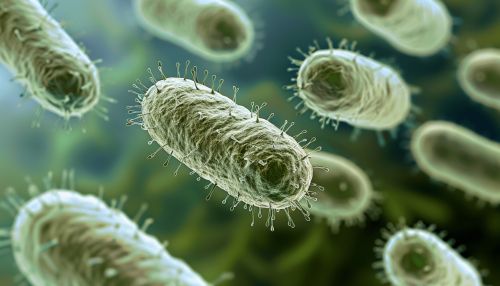Moraxellaceae
Overview
The Moraxellaceae are a family of Gram-negative, rod-shaped bacteria that are commonly found in the environment, particularly in soil and water. They are part of the order Pseudomonadales, which also includes other important bacterial families such as the Pseudomonadaceae and the Moraxellaceae. The family Moraxellaceae is named after the Swiss bacteriologist Victor Morax, who first described the genus Moraxella in 1896.


Characteristics
Members of the Moraxellaceae family are typically non-motile, aerobic, and oxidase-positive. They are also capable of reducing nitrate to nitrite, a process known as denitrification. The cells of these bacteria are usually arranged in pairs or short chains, and they do not form spores. Some species are capable of producing a capsule, which can help protect the bacteria from the host's immune system.
Genera
The Moraxellaceae family includes several genera, including Acinetobacter, Moraxella, Enhydrobacter, and Psychrobacter. Each of these genera includes several species, some of which are of medical or industrial importance.
Acinetobacter
The genus Acinetobacter is perhaps the most well-known member of the Moraxellaceae family. It includes several species that are important human pathogens, such as Acinetobacter baumannii, which is a major cause of hospital-acquired infections.
Moraxella
The genus Moraxella includes species such as Moraxella catarrhalis, which is a common cause of respiratory tract infections in humans, and Moraxella bovis, which causes infectious bovine keratoconjunctivitis, a disease of cattle.
Enhydrobacter
The genus Enhydrobacter is less well-known, but it includes species such as Enhydrobacter aerosaccus, which has been isolated from a variety of environments, including air, water, and soil.
Psychrobacter
The genus Psychrobacter includes species that are psychrophilic, meaning they are capable of growing at very low temperatures. This makes them of interest for studies of life in extreme environments, such as the polar regions or deep-sea sediments.
Ecology
Moraxellaceae bacteria are ubiquitous in the environment and can be found in a wide range of habitats, including soil, water, and air. They are also common inhabitants of the human body, particularly the skin and mucous membranes. Some species are opportunistic pathogens, meaning they can cause disease in individuals with weakened immune systems.
Pathogenicity
Several Moraxellaceae species are known to be pathogenic to humans and animals. For example, Acinetobacter baumannii is a major cause of hospital-acquired infections, particularly in intensive care units. It can cause a range of conditions, including pneumonia, bloodstream infections, and wound infections. Similarly, Moraxella catarrhalis is a common cause of respiratory tract infections, particularly in children and the elderly.
Industrial and Biotechnological Applications
Some Moraxellaceae species have potential industrial and biotechnological applications. For example, certain Acinetobacter species are capable of degrading a wide range of organic compounds, including hydrocarbons and aromatic compounds. This makes them potentially useful for bioremediation, the use of microorganisms to clean up environmental pollution.
